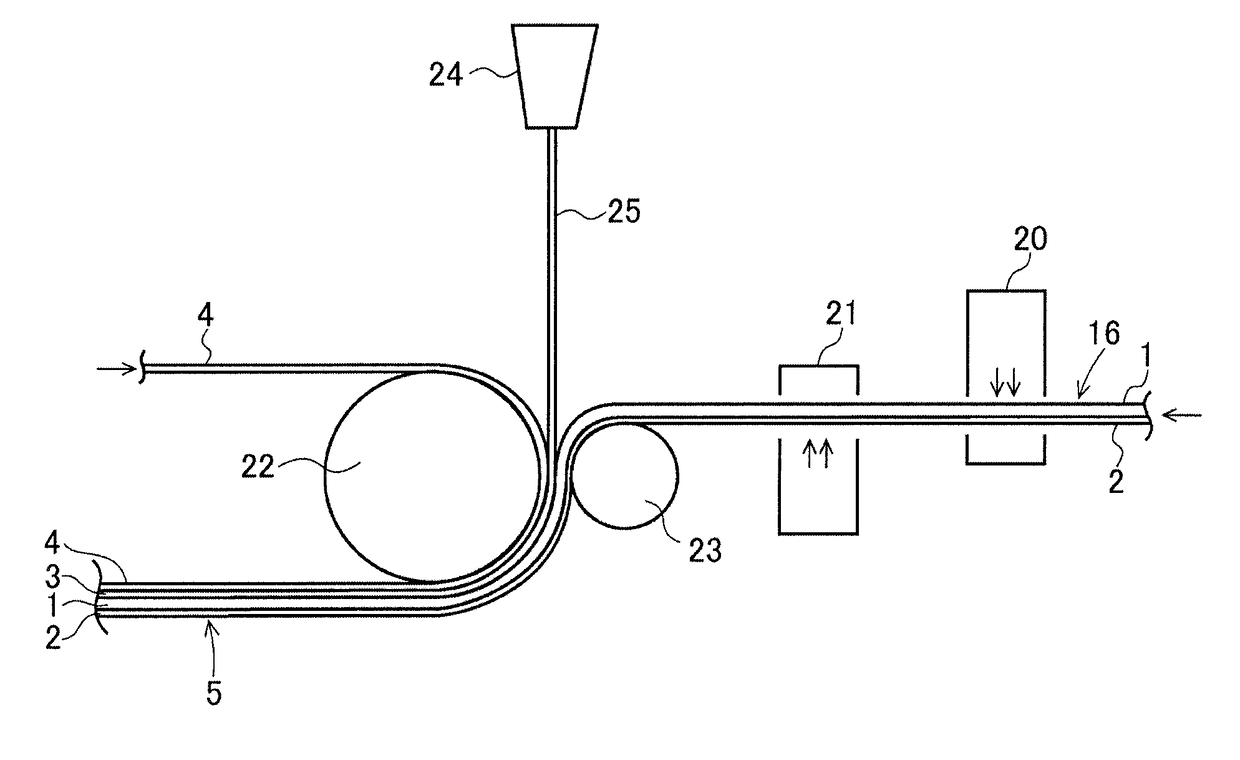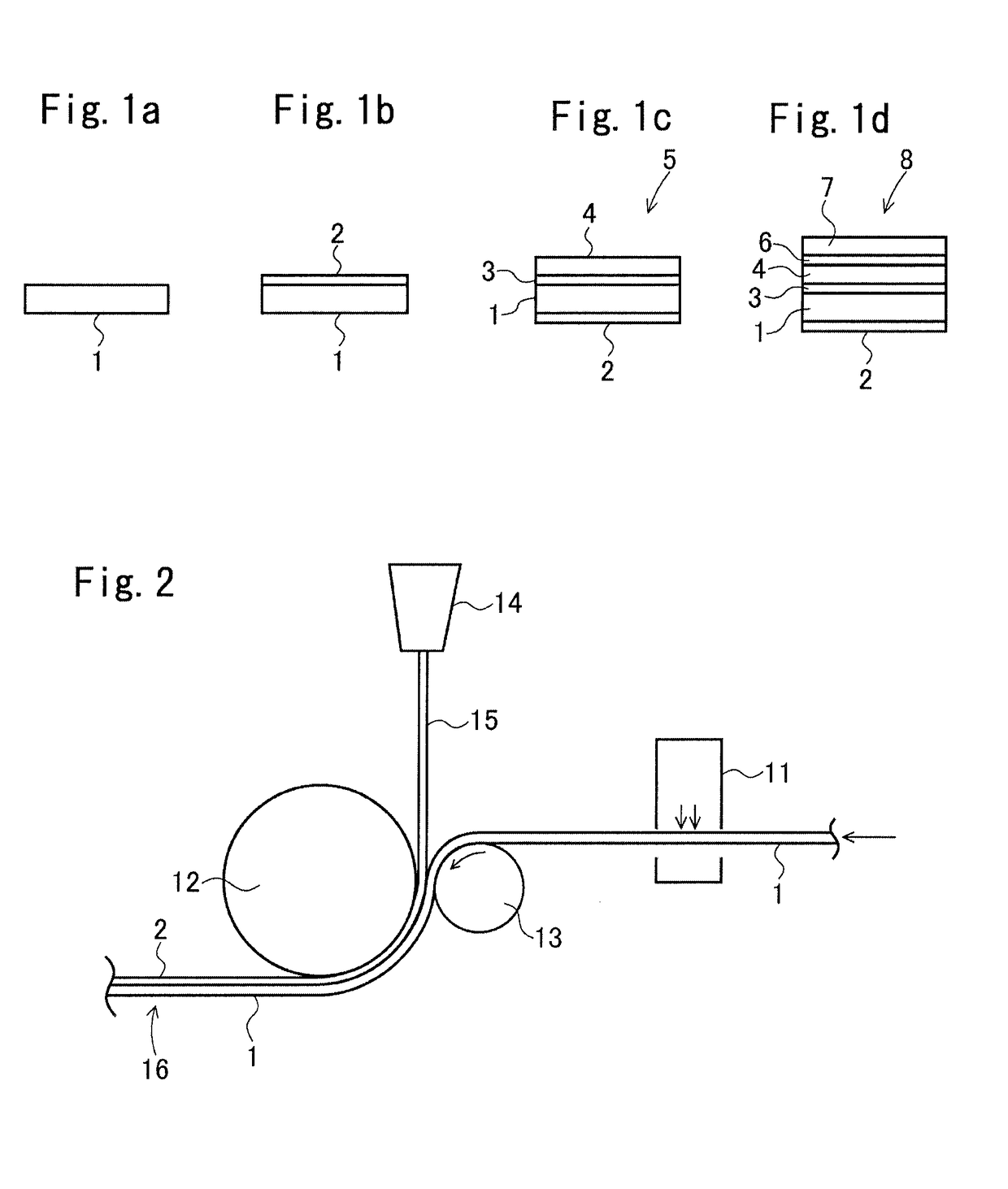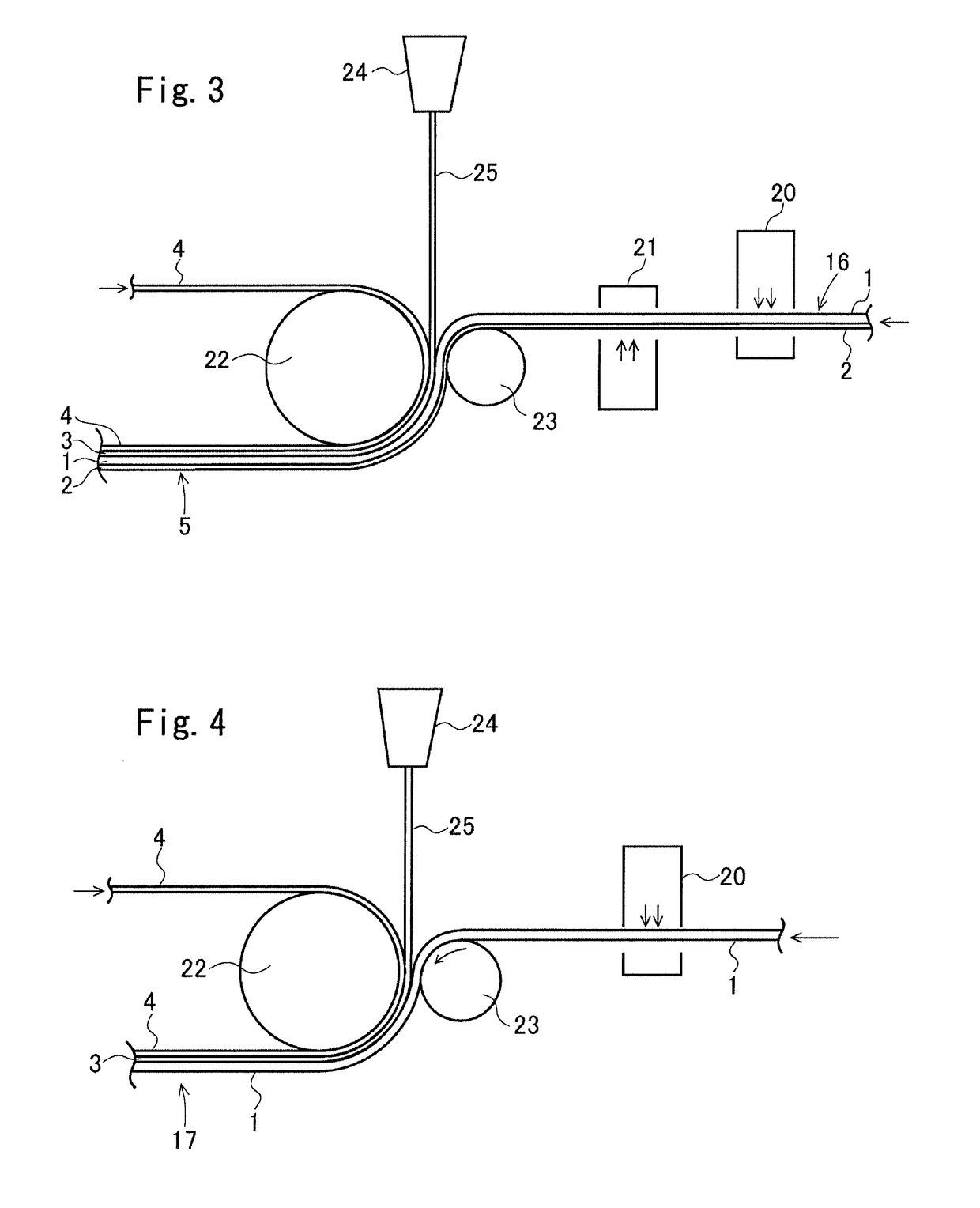Method for manufacturing thermal transfer image-receiving sheet support and method for manufacturing thermal transfer image-receiving sheet
a technology of thermal transfer and image, which is applied in the direction of thermal imaging, synthetic resin layered products, printing, etc., can solve the problems of affecting the nipping of the support and the resin, the disadvantage of increasing the resin thickness, and the disadvantage of calendaring, so as to achieve high surface roughness, high rubber hardness, and high surface roughness
- Summary
- Abstract
- Description
- Claims
- Application Information
AI Technical Summary
Benefits of technology
Problems solved by technology
Method used
Image
Examples
first embodiment
[0034]First Step
[0035]As shown in FIG. 2, in the first step of the first embodiment, while the substrate 1 is continuously fed by a feed mechanism (not shown), one side of the substrate 1 is corona-treated with a corona discharge treatment device 11, and the substrate 1 is then fed between a cooling roller (chill roller) A (12) and a rubber roller (press roller) A (13), with the one side facing the cooling roller A (12). A curtain of a first resin 15 melt-extruded from a die 14 is also supplied to the narrowest point between the cooling roller A (12) and the rubber roller A (13) or slightly closer to the rubber roller A (13) or the cooling roller A (12). The substrate 1 and the first resin 15 are stacked together and are passed between the cooling roller A (12) and the rubber roller A (13) while being held therebetween. Thus, a first laminate 16 composed of the substrate 1 and the first resin layer 2 formed by casting the resin 15 is obtained.
[0036]In this step, if the first resin 1...
second embodiment
[0043]First Step
[0044]In the first step of the second embodiment, as shown in FIG. 4, while the substrate 1 is continuously fed by a feed mechanism, one side of the substrate 1 is corona-treated with a corona discharge treatment device 20, and the substrate 1 is then fed between a cooling roller (chill roller) B (22) and a rubber roller (press roller) B (23), with the one side facing the cooling roller B (22). A porous film 4 fed by a feed mechanism is also supplied between the cooling roller B (22) and the rubber roller B (23). A curtain of a second resin 25 melt-extruded from a die 24 is further supplied between the porous film 4 and the substrate 1. The porous film 4, the second resin 25, and the substrate 1 are stacked together and are passed between the cooling roller B (22) and the rubber roller B (23) while being held therebetween. Thus, a second laminate 17 composed of the substrate 1, the second resin layer 3 formed by casting the second resin 25, and the porous film 4 is o...
example 1
[0125]Manufacture of Thermal Transfer Image-Receiving Sheet Support
[0126]A paper substrate, namely, white base paper (uncoated paper with a thickness of 150 μm, available from Mitsubishi Paper Mills Limited), was provided as a substrate layer. A porous polypropylene film (with a thickness of 38 μm and a density of 0.7 g / cm3) was provided as a porous film for forming a porous film layer.
[0127]A polyethylene resin (with a melting point of 120° C. as measured in accordance with JIS K 7121 and a density of 0.95 g / cm3 as measured in accordance with JIS K 6760) was used as the first resin 15. A polyethylene resin (with a melting point of 107° C. as measured in accordance with JIS K 7121 and a density of 0.919 g / cm3 as measured in accordance with JIS K 6760) was used as the second resin.
[0128]The resin temperature during die extrusion was 320° C. for both the first resin and the second resin.
[0129]A roller having a diameter of 600 mm and having a surface with a ten-point average roughness ...
PUM
| Property | Measurement | Unit |
|---|---|---|
| average roughness | aaaaa | aaaaa |
| thickness | aaaaa | aaaaa |
| thickness | aaaaa | aaaaa |
Abstract
Description
Claims
Application Information
 Login to view more
Login to view more - R&D Engineer
- R&D Manager
- IP Professional
- Industry Leading Data Capabilities
- Powerful AI technology
- Patent DNA Extraction
Browse by: Latest US Patents, China's latest patents, Technical Efficacy Thesaurus, Application Domain, Technology Topic.
© 2024 PatSnap. All rights reserved.Legal|Privacy policy|Modern Slavery Act Transparency Statement|Sitemap



